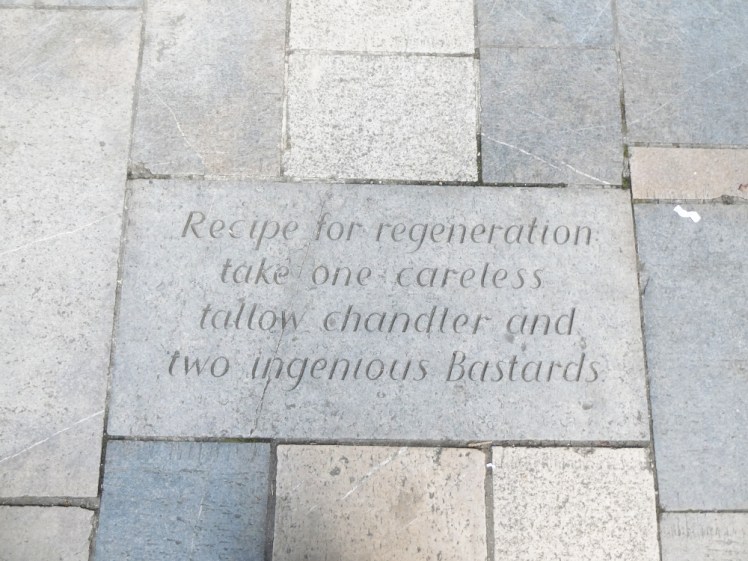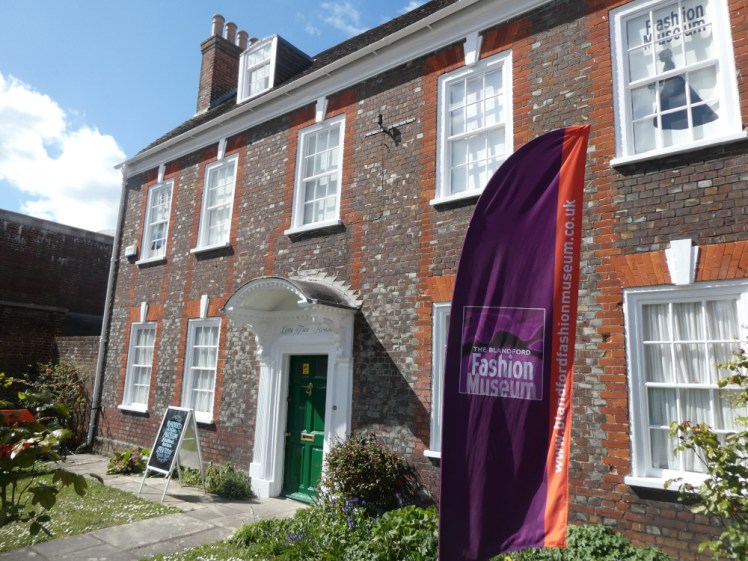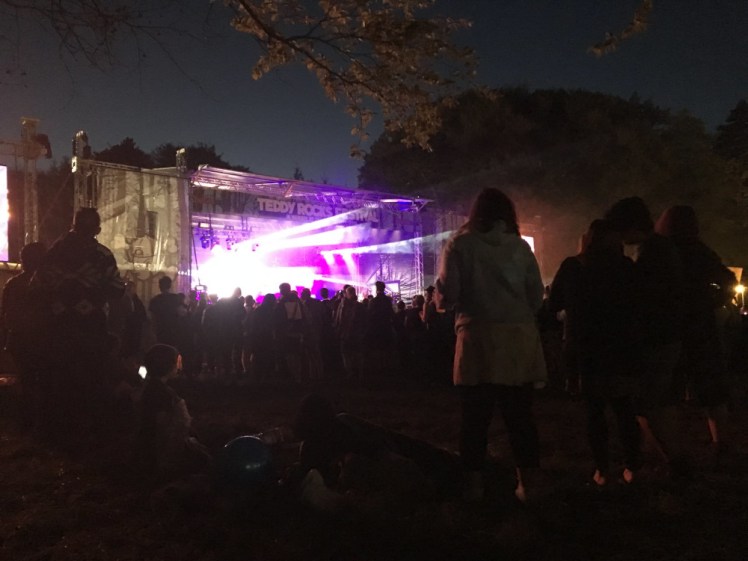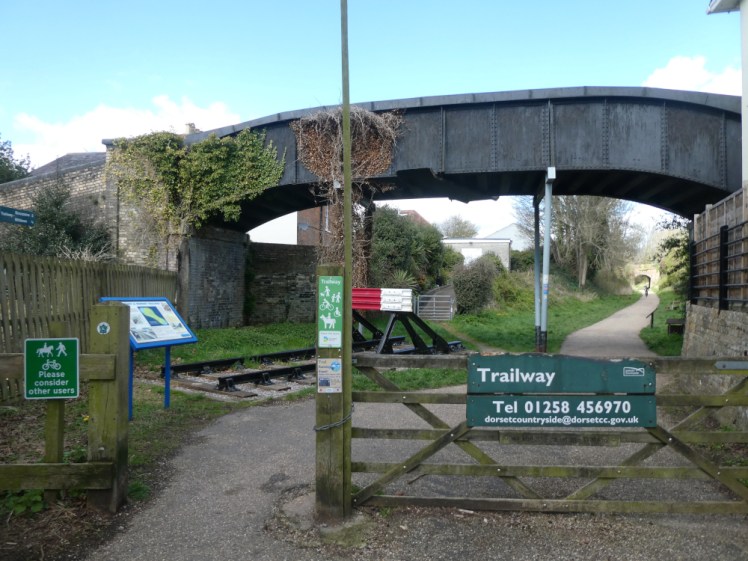It feels like a long time since I’ve done some Wessex Girl/local travel stuff so today we’re heading to Blandford Forum, a market town in North Dorset which I really should have written about years ago. Its interestingly Roman name just means it has a market. It’s not a Roman town, although I think it’s existed long enough to make it into the Domesday Book. No, I don’t know why Blandford got a Forum when none of the other market towns in Dorset – or, as far as I know, anywhere in England – got one. No one uses it. It’s plain Blandford. And by the way, the “Bland” part of its name doesn’t mean boring. It probably refers to a kind of fish found in the river which has been forded here since at least Anglo-Saxon times.
I always think of Blandford as quite a major town in North Dorset, as these things go, probably because it’s where North Dorset District Council was based before the entire county got lumped into just Dorset Council. In fact, it’s only a tiny bit bigger than nearby Shaftesbury, one of King Alfred’s towns and only half the size of Wimborne, which wasn’t one of Alfred’s towns but is the final resting place of his brother Æthelred (that’s Æthelred I, not Æthelred II the Unready, the more famous of the two with that name).
Blandford has three main draws, besides being the market town for the neighbouring villages. Number one, by a long way, is the Great Dorset Steam Fair. It’s actually held some five miles away between Tarrant Hinton and Tarrant Launceston but as the nearest town, Blandford is its basecamp. The B&Bs and the Crown get booked up years in advance and campers buy out every tin of beans, bottle of milk and loaf of bread in the entire town. Number two is the army camp. Blandford is home to the 11th Signal Regiment and, for civilians, the Royal Signals Museum. My grandparents took me there when I was little and I remember nothing but if you’re into military history, you’ll probably enjoy it. Number three is the brewery. Hall & Woodhouse’s Badger Brewery is in Blandford. You probably know Tangle Foot and Fursty Ferret? Maybe? Back in the day, this was also where those revolting primary-school Panda Pops were made. You can do brewery tours if you’re into that.
For a small town in the middle of nowhere, Blandford has surprisingly good transport links. Well, road links. It’s on the crossroads of the A350 which stretches from Poole all the way up to the M4, and the A354 from Puddletown to Salisbury. For a small town in the middle of nowhere, it actually has astonishingly good transport links. No trains, I’m afraid – Dr Beeching took them away a long time ago but the remains of the Somerset and Dorset Railway are now the North Dorset Trailway. Officially it goes between Blandford and Sturminster Newton but unofficially it continues south to Spetisbury and north to Stalbridge and it’s popular with cyclists, dog walkers and Park Run. Buses are a bit on the spare side – they go quite regularly to and from Poole during daylight hours and there are about four services a day to Weymouth, Dorchester, Salisbury and Shaftesbury and about six to Sturminster Newton.
When you arrive in the town centre, at the market place, you might notice it’s all quite good-looking. Lots of nice cohesive stone Georgian buildings and with no obvious “high street”. You see, in 1731, Blandford burned to the ground. A fire began in a tallow chandlers, got out of control and just incinerated the entire town, which would mostly have been wooden back then. The church survived by being the only stone building at the time.



Two local brothers were appointed to rebuild the church, major buildings and generally oversee the rebuilding of the town. Two brothers named John and William Bastard. There’s a plaque in the marketplace which says “Recipe for regeneration: take one careless tallow chandler and two ingenious Bastards”. The medieval layout was kept, hence the lack of obvious high street. Its main roads East and West Streets meet at the marketplace and then various “yards”, “walks” and “passages” join everything up, making the town centre an absolute rabbit warren with all sorts of interesting things hiding behind a plethora of chemists and charity shops.


One particularly interesting thing that’s not hidden exactly but not often seen either is the remaining wartime defences. Around the west and south sides of town, between the town and the river, are assorted pillboxes and anti-tank ditches and blocks. Blandford is of little strategic importance in itself, being merely a small market town, but I guess it sits in a convenient place on that crossroads. Not only did it have the defences, it also had explosives rigged into its two main bridges across the river. If enemy tanks came rolling across the countryside, there was a detonator in 23 West Street, now a fabric shop, to blow up the two bridges to the south of town.

The western bridge still exists but the eastern bridge was a railway bridge and it went when Dr Beeching came along. A single railway arch remains in Stour Meadows, reopened during the pandemic with an idea of using it for events. The volunteers working on hoped to get Michael Portillo to open it, since he’s the one who’s into the railways, but he turned out to not be available during lockdown. I don’t know what events it hosts but it’s open 10am-2.30pm if you fancy taking in the view.


It’s one of these towns that hasn’t entirely moved with the centuries. There are two butchers, although the greengrocer has now gone, and there’s a gun shop right there on West Street. It claims to be the oldest shop in town and I can well believe it – look up and see its old-fashioned sign on the wall two storeys up. Look at it selling guns in a country where that’s not normal! Ok, these are very specifically for hunting and I’m sure there’s more to buying one than just picking it up, plonking it on the counter and handing over some money. It’s also the local home and country store – this is where you go for fishing stuff, waders, cushions, silk scarves, tweed jackets and expensive handcrafts. And guns. The corn market no longer happens in the Corn Exchange and sheep are no longer sold on Sheep Market Hill but the names remain. And there is a market still on Thursdays and Saturdays, although it’s more in the way of blankets and clothes and phone cases than livestock.

I’m very fond of Rebekah’s Kitchen on Salisbury Street, a cute little independent cafe that does a very good cheese toastie besides the usual array of artisan burger, avocado on sourdough, shakshuka, pancakes etc. Then, up around the corner is the Blandford Fashion Museum which is somewhere else I’m sure I visited when I was much younger, back when it had the much better name “Cavalcade of Costume”. Someone commented on Twitter recently about small towns having some of the weirdest and most specific museums ever and this certainly is something you wouldn’t expect to find in a small market town.

Down past the Fashion Museum and back into the market place is the church. I’m not mad about the church. The Georgian style really doesn’t work for me but I guess it’s quite a light airy church and back before the plague when they used to hold the Georgian Fayre, you could climb up to the roof. From the inside, using the steps, obviously. I liked the rooftop tours and I wish I could have done that today but the church is having major works, including having the roof repaired, so no rooftop tour today. Maybe I’ll try again at the 2023 Georgian Fayre.

Next stop, along East Street, is the Ginger Viking, a relatively new bar/cafe. I’ve been in for lunch a couple of times but this place really thrives in the evening as a cocktail bar. I say “thrives”. This isn’t Bournemouth. They tend to run the bar at events – they’re doing Teddy Rocks, which is a smallish-scale music festival now held on a nearby farm but originally held outside the Greyhound in the town centre to raise money for children’s cancers, and they sponsored Teddy Laughs, which is an occasional comedy evening in the Corn Exchange for the same cause – Teddy Rocks is named after Ted Newton, who died aged ten of a rare bone cancer and the Teddy events are in his memory to raise funds for children with cancer. Teddy Rocks is being headlined by Eagles of Death Metal, Terrorvision, the Fratellis and Newton Faulkner this year, which isn’t bad for a small provincial festival. I’ve seen Ash and Twin Atlantic headlining and I missed the Darkness and the Zutons in 2019 because I was in a tent in Buckinghamshire that weekend.


And finally, we’ll weave our way north, up Damory Street and across to Station Court and we’re back on the Trailway. Incidentally, the station at Shillingstone survived and they’re six months into a two-year project to get trains running on the trailway again. It’ll only be short taster trips of a couple of hundred yards, if that, and the footpath is being diverted so cyclists and dogwalkers don’t get squashed by steam trains but that’ll be fun, you’ll definitely get a blog about it if/when that gets finished and opened. Sadly, it won’t ever extend all the way to Blandford but at least there’s a nice public trailway to enjoy the outdoors from.
